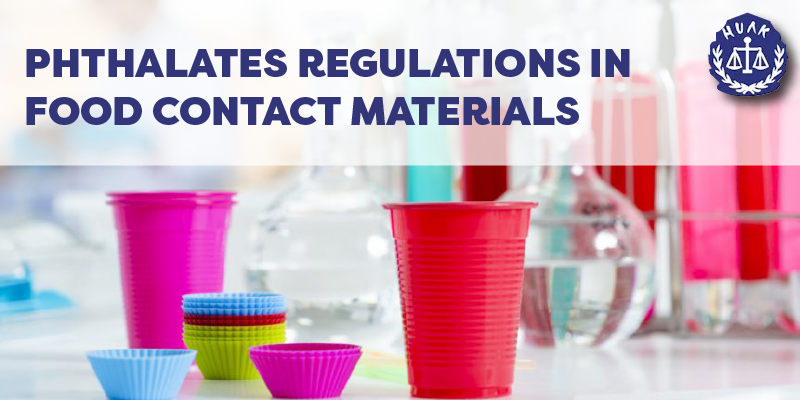
The issue of phthalates is urgent for manufacturers of food and food-contact items. People are worried that these chemical substances in plastics and other ubiquitous products could make their way into food and cause health problems. Manufacturers are bound to comply with the set standards that limit the use of phthalates in food-related products.
When it comes to compliance with Phthalates use, food contact material testing can ensure that everything is safe for consumers to eat.
What Is Phthalate?
Phthalates are a group of chemicals with plasticizing properties. They offer enhanced flexibility, durability, and transparency, making them an important component of everyday manufacturing.
Phthalates are often added to plastics to make them more malleable and appropriate for food-contact goods, including containers, cutlery, and packaging. Given it’s wide use, it is easy to consume it through:
- Food or drink provided in phthalate-containing plastic
- Eating or drinking exposed animal dairy and meat
- Applying makeup, shampoo, moisturizers, and other personal care goods
- Contacting dust in rooms with phthalate-containing carpet, upholstery, wall coverings, or wood finishes
The Effects Of Phthalates On Health
The following are some of the health effects of phthalates on health:
- Irregular Hormonal Balance
Phthalates can disrupt the endocrine system, which controls hormone levels. This can lead to problems with reproduction, delays in childhood development, and changes to metabolic processes.
- Risks To Reproductive Health
Research has shown that phthalate exposure increases the risk of polycystic ovarian syndrome (PCOS) and other reproductive disorders in women, as well as lower fertility.
- Effects On Development
Babies exposed during pregnancy may have negative effects on their behavior and cognitive development, among other negative outcomes.
- Asthma And Allergies
There is some evidence that children who are exposed to phthalates are more likely to develop allergies and asthma.
Guidelines For Using Phthalates In Food Packaging
To protect consumers’ health, regulations in the United States and the European Union have strict limits on the amount of phthalates allowed in materials that come into contact with food.
- United States
The FDA and the European Union have rules on phthalates in food-contact materials. Twenty-three phthalates have had their food-contact authorizations removed by the FDA under 21 CFR sections 175–178. In May 2022, this rule was released for indirect food additives: adhesives and coating components, polymers, paper and paperboard components, adjuvants, production aids, and sanitizers.
- European Union
According to EU Regulation 10/2011, phthalates are strictly restricted in the plastic layer that comes into direct contact with food within the European Union. This regulation is crucial in protecting food product integrity by setting exact migration limits for many phthalate compounds, guaranteeing that they stay within the safe ranges. Modifications to the Regulation were finalized in July 2023 and implemented on August 1, 2023.
Listed below are the main phthalates that are covered under the EU Regulation 10/2011, along with the limits on their use and migration:
- Di-ethylhexyl phthalate (DEHP):
To be used only: Plasticizers are necessary for items that regularly come into contact with non-fatty foods. It can also be used as a technical support agent at concentrations of up to 0.1% (w/w) in the finished product.
Migrating Capacity: 6 milligrams per kilogram
- Benzyl butylphthalate (BBP):
To be used only: A plasticizer in products and materials meant for multiple uses:
- In products and materials meant for single use that come into contact with non-fatty meals (except for infant formula and follow-on formula)
- a technical support agent in final products up to 0.1% by weight.
Migrating Capacity: 6 milligrams per kilogram
- Dibutylphthalate (DBP):
To be used only: It is used as a plasticizer in products used repeatedly or come into contact with low-fat meals or as a technical support agent in polyolefins at concentrations as low as 0.05% (w/w) in the finished product.
Migrating Capacity: 12 milligrams per kilogram
- Diisononyl phthalate (DINP):
To be used only: Plasticizer in repeated-use materials and articles:
- Plasticizers in single-use materials and articles touching non-fatty foods, excluding infant formula and follow-on formula
- Technical support agent up to 0.1 % (w/w) in the final product.
- Incompatible with FCM compounds 157, 159, 283, and 1085.
Migrating Capacity: 1.8 milligrams per kilogram (DINP + DIDP)
- Diallyl phthalate (DAP):
To be used only: Monomer
Migrating Capacity: It is not allowed to migrate since it is undetectable (ND).
The Bottom Line
Food contact material testing for phthalates is crucial to guarantee compliance and safety. Testing these materials thoroughly can help measure phthalate levels with great accuracy, ensuring they are within the limits set by regulators. In addition to providing legal compliance, it protects consumers’ well-being.
Show your customers that your product is phthalates-free or below set limits! We provide complete product testing in 5-7 days, ensuring accuracy and reliability. Shenzhen Huak can help with your testing needs—contact us today.

Leave a Reply